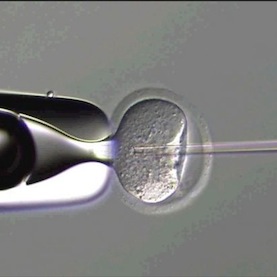For reproduction to occur, it is commonly known that an X chromosome and Y chromosome, from mother and father respectively, are both needed. However, a current study by Yamauchi et al. may have taken us one step closer to the creation of babies involving no use of the Y chromosome at all.
The study has managed to create baby male mice, using only two genes from the Y chromosome of a male mouse and the X chromosome of a female. The two genes required from the Y chromosome are Sry and Eif2s3y. Sry alone can produce an anatomically male mouse, as it controls the development of gonads and male differentiation. The offspring in this case however, would be infertile, as it would not have genes involved in sperm production.
The Eif2s3y gene being included allows spermatogenesis to partially occur, with spermatocytes undergoing meiotic prophase and the first meiotic division, before stopping and staying as secondary spermatocytes. These secondary spermatocytes are known as round spermatids, and are precursors to sperm cells.
These mice can then eventually reproduce successfully, via the help of Round Spermatid Injection (ROSI). This technique involves the injection of the spermatids into eggs in culture dishes. These then develop into embryos and are implanted into female mice wombs with 9% of these transfers resulting in a birth of a live mouse. Statistically, this is significant, as using the same technique but with mice with full Y-chromosomes results in a successful birth 26% of the time.
ROSI is already being used with humans, with males whose testes can only produce spermatids, and not normal sperm. There are worries with the technique however; the offspring produced would likely have genetic defects, due to the process of imprinting (the turning on and off of genes in sperm cells) not occurring to completion in spermatids. Alleviating these fears was the fact that from the study, using ROSI, normal offspring were obtained.
Being able to produce male mice using only 2 genes of the Y chromosome is a big step forward for science, showing that all of the male genes available are not needed at all in the production of offspring. This could have profound effects in terms of conservation of species, potentially enabling us to save a species using females alone.
Jack Di Francesco





Add Comment